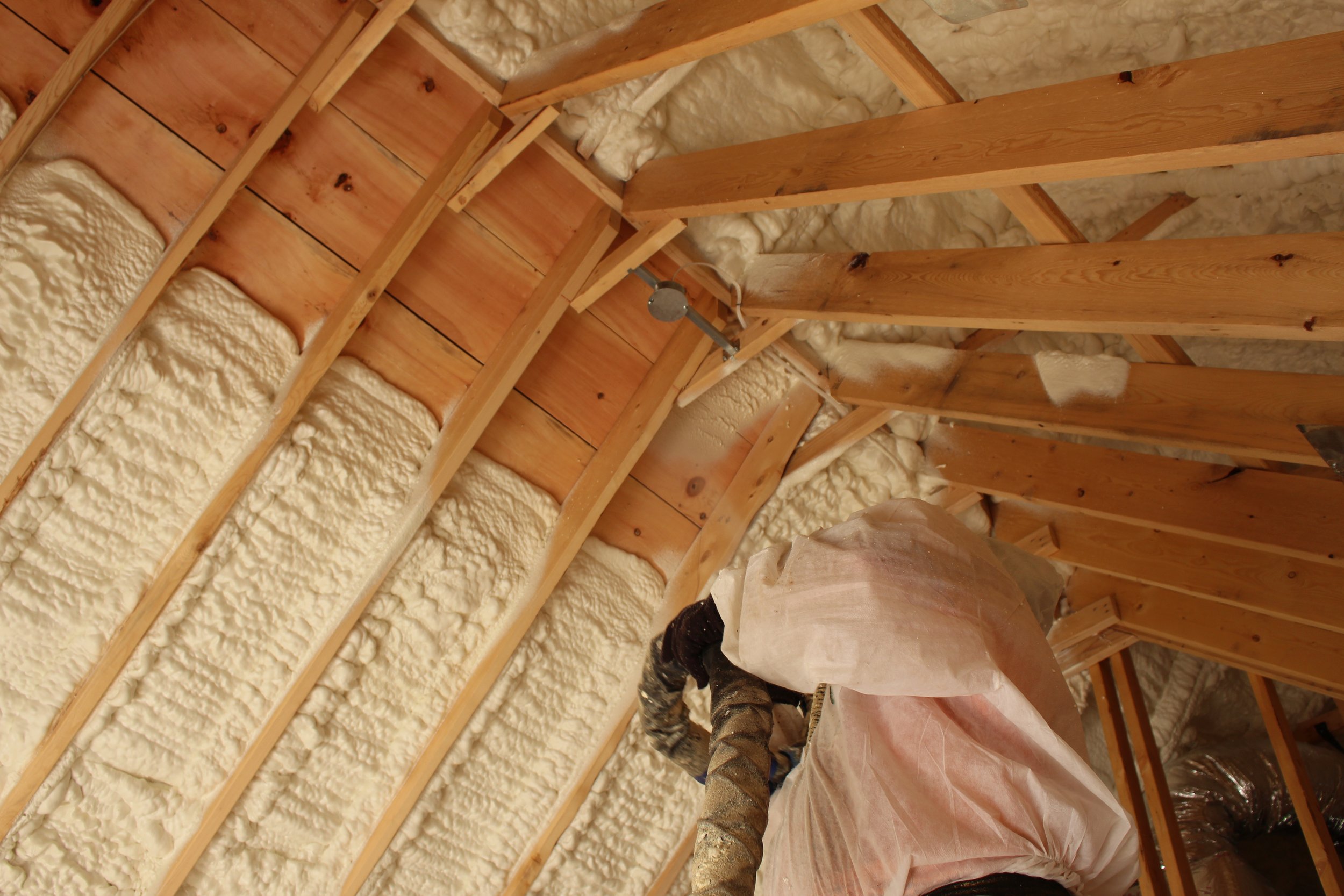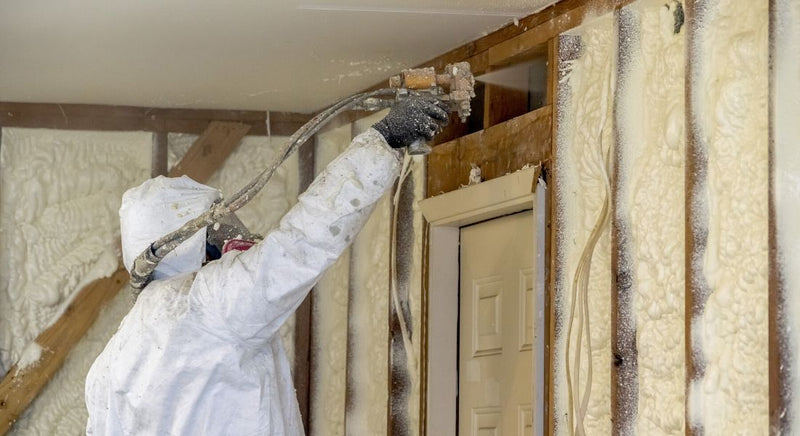Spray Foam: The Ultimate Option for Air Sealing and Insulation
Spray foam insulation has actually become a leading service for effective air securing and thermal insulation, providing a special mix of buildings that establish it apart from traditional techniques. Its capability to broaden and fill spaces makes it especially efficient in avoiding air leak, which can dramatically impact power effectiveness. Nonetheless, recognizing the complete range of its advantages, installment procedures, and comparisons with various other insulation types is important for making informed choices. As we explore these aspects, the ramifications for both new constructions and retrofits become progressively substantial. What factors should influence your option?
What Is Spray Foam?
Spray foam is a versatile insulation material that combines the concepts of air securing and thermal resistance to boost power efficiency in structures. Made up primarily of polyurethane or various other similar substances, spray foam is used as a fluid that increases upon contact with surface areas, creating a solid, continual layer of insulation. This one-of-a-kind home allows it to fill gaps, fractures, and gaps that conventional insulation materials may forget, offering a premium air seal.
There are two primary kinds of spray foam: open-cell and closed-cell. Open-cell spray foam is lighter and a lot more versatile, using excellent noise absorption and a reduced R-value per inch - Spray Foam. On the other hand, closed-cell spray foam is denser, giving a higher R-value, dampness resistance, and included architectural integrity to constructing elements
The application process usually involves specific equipment, guaranteeing a seamless application that adheres to different substratums, consisting of metal, concrete, and timber. This adaptability makes spray foam ideal for both brand-new constructions and retrofitting existing frameworks. Its ability to develop an impermeable obstacle considerably contributes to reducing energy consumption and improving indoor air high quality, thus making it a preferred option among builders and homeowners alike.
Benefits of Spray Foam Insulation
One of one of the most significant advantages of spray foam insulation is its exceptional ability to develop a constant air obstacle, which efficiently lessens power loss. Unlike standard insulation products, spray foam increases to load cracks and voids, guaranteeing that air leakage is significantly minimized. This characteristic not only boosts energy performance yet likewise brings about lower utility expenses over time.
Furthermore, spray foam insulation supplies superior thermal resistance, adding to an extra stable interior atmosphere. Its high R-value per inch permits reliable insulation in confined rooms, making it excellent for attics, wall surfaces, and crawl areas. The moisture-resistant buildings of spray foam assistance protect against mold and mildew and mold growth, promoting healthier living conditions.
Another important benefit of spray foam insulation is its sound-dampening top qualities (Spray Foam). It properly reduces sound transmission between spaces, developing a quieter and a lot more comfortable home setting. The sturdiness of spray foam also stands out, as it does not droop or resolve in time, preserving its efficiency throughout its life-span
How Spray Foam Works
Comprehending exactly how spray foam insulation functions is essential for appreciating its efficiency in air sealing and thermal resistance. Spray foam insulation includes two key components: isocyanate and polyol material. When these elements are blended, they undertake a chemical reaction that triggers the product to increase rapidly, creating a thick foam that fills dental caries, cracks, and voids.
As the foam expands, it abides by surfaces, forming a closed seal that dramatically minimizes air infiltration. This particular makes spray foam insulation extremely effective at preventing drafts and wetness penetration, which can result in energy loss and damage with time. Furthermore, the closed-cell variation of spray foam uses premium thermal resistance due to its inflexible framework, effectively lessening warmth transfer.
The unique homes of spray foam allow it to satisfy uneven surface areas, making sure detailed coverage and a smooth barrier. Consequently, spray foam insulation not just enhances power effectiveness yet likewise adds to improved indoor air high quality by decreasing the buildup of pollutants and allergens. Eventually, understanding the auto mechanics behind spray foam emphasizes its duty as a remarkable choice for insulation and air sealing in both domestic and business applications.
Installation Refine Overview

Prior to setup, the area needs to be properly cleansed and prepped, making certain that surfaces are complimentary from debris, dust, and moisture. This step is crucial since contaminants can endanger adhesion and overall efficiency. As soon as the area is prepared, the application includes blending both parts of the spray foam, which increases upon contact and fills gaps effectively.
Trained professionals ought to conduct the installment, using specific equipment to make certain uniform protection and optimum thickness. Safety and security precautions, including wearing safety equipment and ensuring correct ventilation, are imperative during this process. After application, the foam commonly cures promptly, developing a strong obstacle that improves power effectiveness.
Contrasting Spray Foam to Conventional Insulation
When evaluating insulation alternatives, spray foam insulation stands out in contrast to standard materials such as fiberglass and cellulose. Unlike fiberglass and cellulose, which can enable air infiltration, spray foam broadens upon application, filling gaps and gaps to develop a closed seal.
In try this addition, spray foam gives a greater R-value per inch than traditional insulation types, supplying even more efficient thermal resistance visit this page in a thinner account. This characteristic is particularly beneficial in rooms with limited tooth cavity depth. In addition, spray foam is immune to dampness and mold and mildew development, which can be a significant worry about cellulose and fiberglass, particularly in moist settings.
Nevertheless, spray foam insulation typically carries a greater in advance cost than its standard equivalents. Homeowners must evaluate this first financial investment against lasting energy financial savings and efficiency advantages. Eventually, while both insulation types serve their function, spray foam arises as a much more innovative solution for contemporary insulation requirements, specifically in terms of air sealing and thermal performance.

Verdict
In recap, spray foam insulation stands for a very reliable option for accomplishing optimal air sealing and thermal resistance. Its special homes, including moisture resistance and noise dampening, make it ideal for numerous applications in both new buildings and retrofitting tasks (Spray Foam). Although the preliminary expenses may be higher contrasted to traditional insulation materials, the long-lasting benefits, such as substantial energy cost savings and boosted interior air quality, justify the financial investment and highlight its value in see this modern-day structure methods.
Spray foam insulation has actually arised as a leading remedy for efficient air sealing and thermal insulation, providing an unique mix of residential properties that set it apart from typical methods.Spray foam is a flexible insulation material that incorporates the principles of air securing and thermal resistance to boost energy performance in buildings.When reviewing insulation choices, spray foam insulation stands out in contrast to standard materials such as fiberglass and cellulose. Inevitably, while both insulation types serve their purpose, spray foam arises as a more advanced service for modern-day insulation demands, particularly in terms of air sealing and thermal effectiveness.
In recap, spray foam insulation represents an extremely efficient service for accomplishing optimal air sealing and thermal resistance.
Comments on “Usual Myths About Spray Foam: Debunking the Misconceptions”